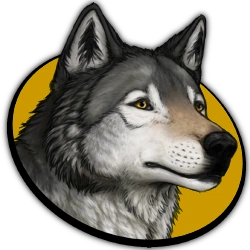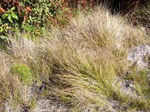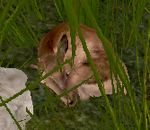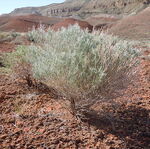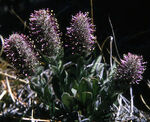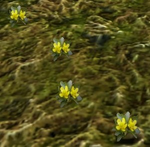| Vegetation is currently under construction
The information contained within it should not be presently considered fully accurate and/or complete. You can help by contributing to it. |
Vegetation refers to growth sprouting from the terrain. Some will change appearance depending on the season, while others may temporarily disappear during harsh conditions. The available selection was further expanded upon with the introduction of version 2.7.2.
Trees
Douglas Fir
There are now four variations for the Douglas fir tree.
Pine
Pine trees are plentiful.
Red Maple
Red maple trees change appearance based on the season. In winter, their branches are barren; in spring and summer, they branches are full of green leaves; in fall, their branches are filled with vivid red leaves.
Grasses
Pinegrass
Pinegrass (Calamagrostis rubescens) is a species of grass which is unusual in that it rarely flowers. It occurs in forest areas but only flowers under full sunlight in late June through August. Grizzly bears forage on pinegrass in the spring. Pinegrass is also utilized by black bear, white-tailed deer, mule deer, bighorn sheep, and elk. Douglas-fir/pinegrass and subalpine fir/pinegrass habitat types are used by boreal owls for nesting and roosting in the northern Rocky Mountains.
Pinegrass in-game is depicted by clusters of tall grass found throughout the game map in areas where it can grow and flourish.
In WolfQuest: Anniiversary Edition, tall grass (pinegrass) is used as a shelter for young pups and immobile fawns and calves. It is the only form of shelter present at rendezvous sites. It stands out with its darker shade of green compared to the grasses surrounding it, and appears consistently at greater draw distances than all other vegetation.
It does not appear everywhere, however; there are areas without pinegrass where, if the player opts to take their pups anywhere and everywhere, they will be most vulnerable due to the lack of hiding places.
Shrubs and Bushes
Huckleberry
Huckleberry buses are berry-bearing bushes.
Rabbitbrush
Rabbitbrush (Ericameria nauseosa) provides cover for small animals. Animals (like rabbits and hares) love its seeds and leaves. It flowers in August, so by the time fall comes around on Amethyst Mountain, the flowers have faded. In Slough Creek’s spring season, it is just a green bush. Rabbitbrush joins pinegrass and new snowberry bushes as understory vegetation and in open fields.
Snowberry
Snowberry (Symphoricarpos spp.) is a low-growing shrub. It joins pinegrass (Calamagrostis rubescens) and new rabbitbrush as understory vegetation and in open fields.
Flowers
Sagebrush buttercup
(Ranunculus glaberrimus) This April bloomer provides lovely yellow flowers throughout Yellowstone, including open woodlands, shrublands, grasslands, and subalpine, and alpine meadows. Who doesn’t love a cheery carpet of buttercups?
Spring Beauty
(Claytonia lanceolata) These short, delicate wildflowers have star-like clusters of white flowers. They earn their name because they are one of the earliest blooming wildflowers in Yellowstone, carpeting the forest floors and meadows in April. The bulbs of spring beauty are vital spring food for grizzly bears!
Sunroot
Sunroot is a yellow flower.
Kittentails
(Besseya wyomingensis) Kittentails are another April bloomer in Yellowstone. These pink fuzzy flower stalks are found in grasslands, open forest, and fields at all elevations. The WolfQuest Team chose to include them due to their distinctive shape.
Gallery
pending
Trivia
- Credit (and a huge thank you!) to Pepper for posting a topic on the community forums detailing the new vegetation. Read it here: http://wolfquest.org/bb/viewtopic.php?f=31&t=80100
References & External Links
| Environment | ||
|---|---|---|
| Game World | Birds • Insects • Seasons • Time • Vegetation • Weather | |
| Technical | Skybox • Time • Weather | |
